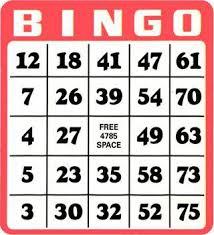Two Reasons the CEO Should Not Run Sales
The role of CEO is hard enough, particularly in this shifting and changing economy. Balancing all the spinning plates you face each day is difficult without trying to lead and manage a sales team.
The quickest way to insure a sales decline is have your sales team report to the CEO.
I have seen sales decline when CEO’s take on the role of driving the sales team for two common reasons;
CEO’s fail to provide the sales team a Value Proposition that resonates with buyers
CEO’s communication preference and style
One of the best parts of my job helping a variety of businesses that have what they call a “sales problems”. I have served a number of CEO’s over the years and as a group (for the most part) they understand their most important role is the keeper of their brand promise and positioning .
To be effective as CEO you need to balance all those spinning plates while also focusing on those initiatives that result in the greatest impact on the business today and in the future. (not a job for the faint of heart) CEO’s are natural at problem solving and driving the execution of key performance indicators. They are process driven and have the tenacity of a pit bull once they lock into a vision.
Most CEO’s should never lead sales for two main reasons;
CEO’s fail to provide the sales team a value proposition that resonates with buyers
Salespeople require a market driven value proposition for the products and services they sell. This should explain the problems you solve for your buyers and not just what you do. It should help your sales team understand who they should target. To insure your value proposition resonates and continues to connect with buyers you must listen and observe the market on a continual basis. Focused CEO’s are flying at 45,000 feet above your market and often become frustrated when sales teams share new roadblocks to achieving their goals. What CEO’s want is sales velocity.
You can tell when your CEO is frustrated when he or she says;
“ just make it happen”,
… or my favorite ” I don’t pay you to tell me problems, I pay you to sell through objections and hit your numbers…” .
CEO’s have so many things already on their plates the last thing they need is to add more “to-do’s” to add to their never-ending list. Often buried deep in sales feedback you will find the need for new sales tools for ajusting the sales process based on a buying process that shifted.
A strong VP of Sales can work with salespeople and the CEO. The VP of sales understands the mission and objectives while also constantly assessing the market, buyer needs, buyer criteria, and equips the sales team with value propositions and sales tools.
CEO’s communication preference and personality style
CEO’s are focused on communicating in short bullet point bursts and salespeople speak in stories. ( can you see the train wreck about to happen?) Market leading salespeople incorporate what I teach that I call “story speak”. As opposed to speaking in feature and benefits, I teach salespeople to listen to the buyer problems and share how our product or service solves that problem in the form of a story. So we teach salespeople to speak in stories to communicate effectively, but we get frustrated when they can’t report results to us in bullet points?
I attended a sales conference once and the CEO brought me in to fix what he called a repeatable sales process problem. He asked his team to individually meet with me to share the common roadblocks they face in achieving their numbers each month. ( so far so good)
But then he said something that still makes me cringe…
And remember Mark is busy like me so…
Be brief…
Be brilliant….
Then Be Gone…
(When he got to this part three of the salespeople in the room also said “be gone”…they obviously have heard this before)
CEO’s often rise up through the accounting, technology, and finance channels and they are very process driven. They do not mange people, they develop and manage processes,systems, and or people to follow processes. If you follow DISC assessments, most CEO’s are high D, moderate to low S and low I and moderate to high C. Most salespeople have (very) high I, high D and low S and C. (Often very low C) So again, just based on how CEO’s and salespeople are naturally wired that light at the end of the tunnel is a train.
An experienced VP of sales is constantly listening for common market roadblocks shared among their sales team. They grew up through the sales ranks.Experienced sales leaders understand you need to lead each salesperson individually. A seasoned sales leader will observe and listen to changing buyer problems and processes to identify sales tools the team needs to help their teams continue conversations to a close. VP’s of sales earned long ago how to use their sales team’s natural styles and they provide back-end support for their shortfalls.
So how about your experience…..
Should sales report to the CEO? Why or why not?
Is there a benefit for CEO’s to have sales teams report to them?









